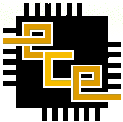


Purdue University
School of Electrical and Computer Engineering
Profile of Video and Image Systems Engineering (VISE) Program
In 1996, the Video and Image Systems Engineering (VISE) program was introduced at Purdue University to meet the educational needs of the imaging industry. The VISE program consists of two major components: a state-of-the-art lecture/laboratory facility and a rich curriculum of video and imaging-related courses. The program also provides full Internet access to all content, including streaming video of lectures. Initially funded by a grant from the Hewlett-Packard Company, it has since been supported by Hewlett-Packard and numerous other industry partners. The VISE program and facility has evolved into an unequaled educational resource designed to teach both the analytical and applications aspects of imaging systems at both the undergraduate and graduate levels. Interesting fact: The explosive growth of information technology in the past decade has been built on the pervasive use of imagery as an intuitive medium for communications.
- The VISE curriculum is built around a set of courses designed to teach the key components of imaging systems to both the existing and future work force of the IT industry.
- The facility includes a unique set of technological teaching tools that support an integrated environment where students can simultaneously learn analytical concepts, and use those concepts in the design of imaging system applications.
- Since each student is seated in front of his or her own computer, there are opportunities for interactive demonstrations and experiments during lectures.
- The VISE facility is equipped for acquisition, display and processing of high definition video right in the classroom, from broadcast or satellite feeds.
- Since the inception of the program in 1996, over 1500 students have learned about imaging and related technologies from VISE courses.
- Applications of this technology include digital cameras, DVD movies, high definition television, digital on-demand movies, digital cinema, medical imagery, computed tomography, positron image tomography and magnetic resonance imaging.